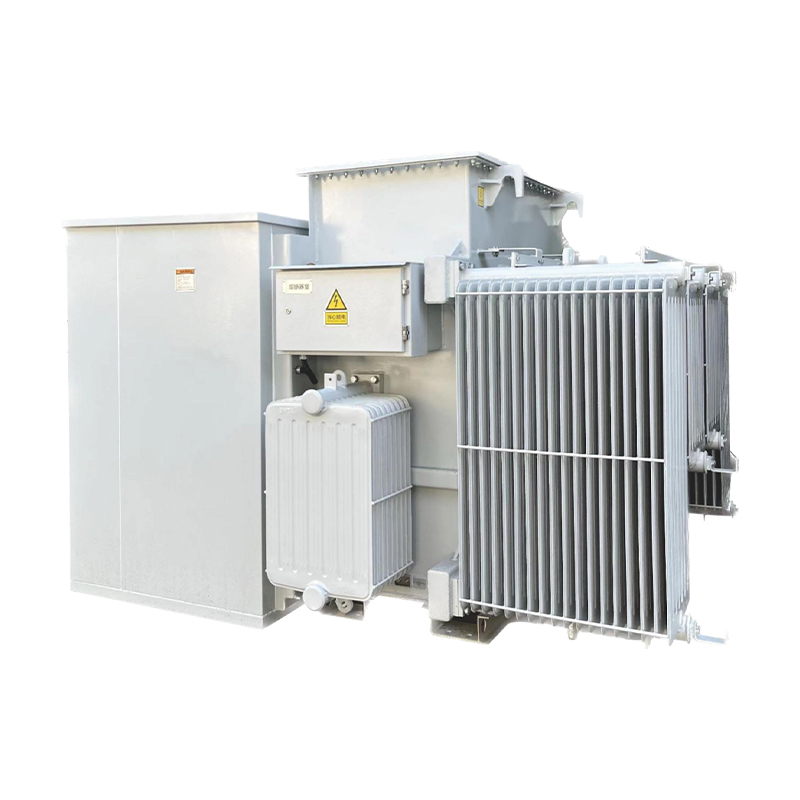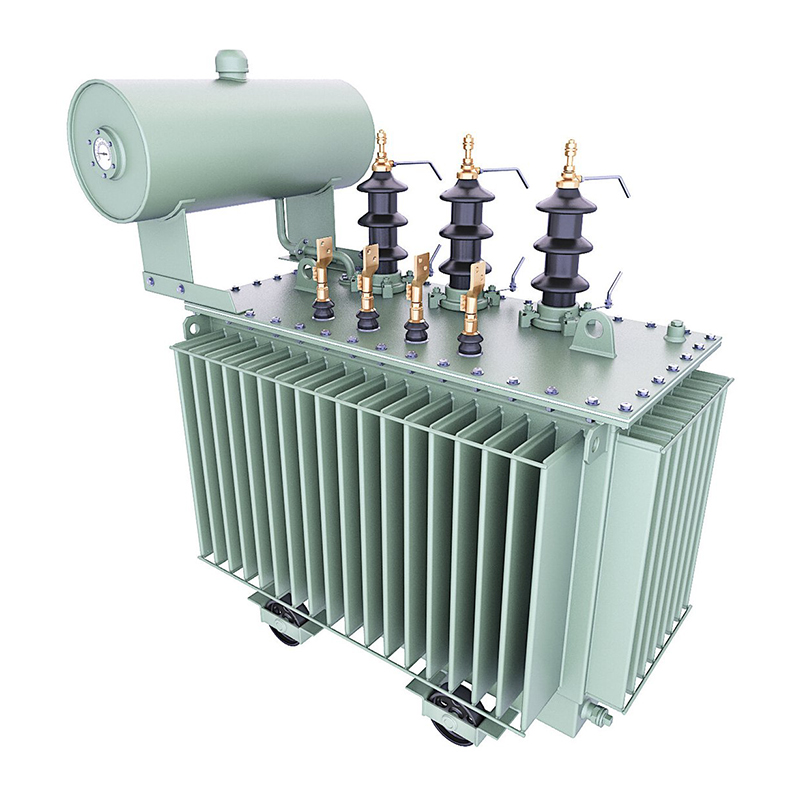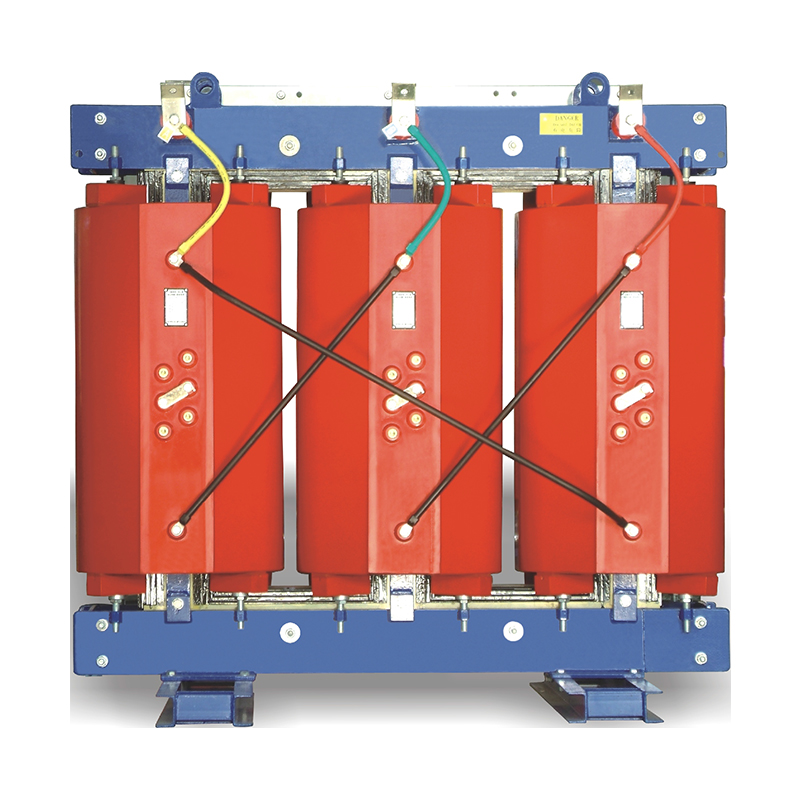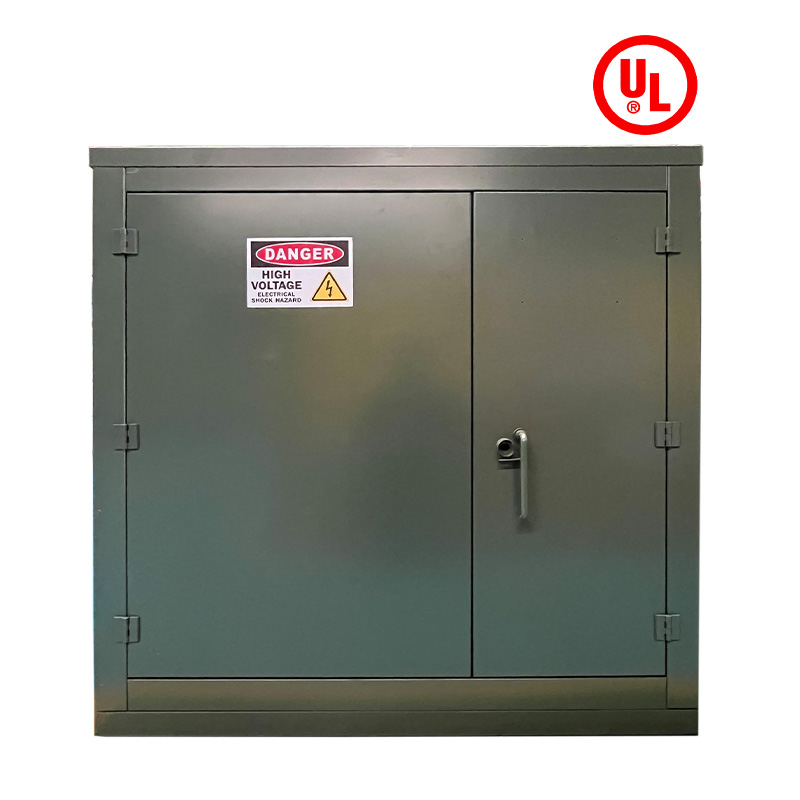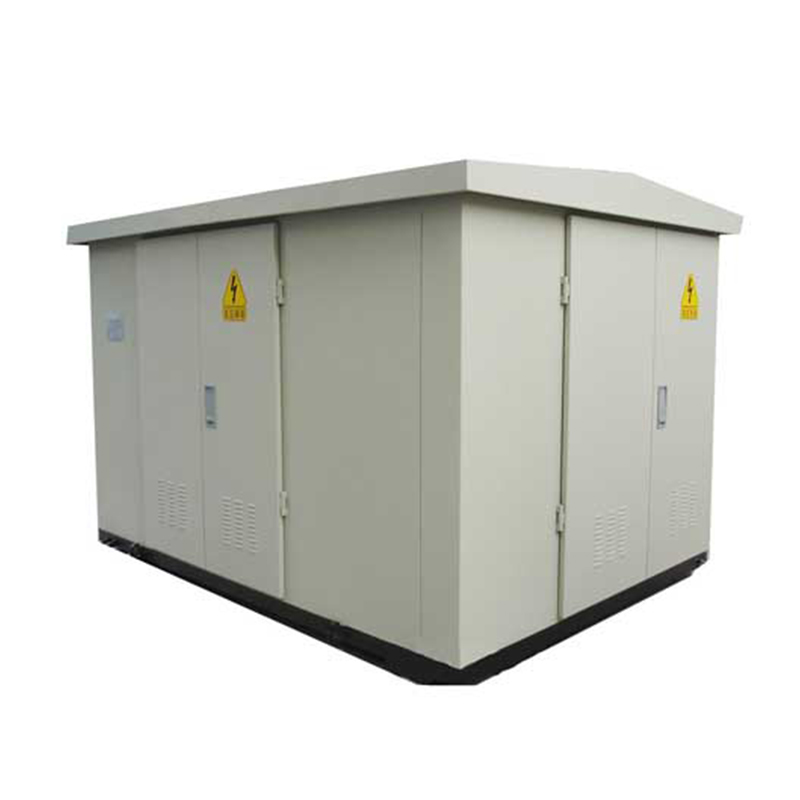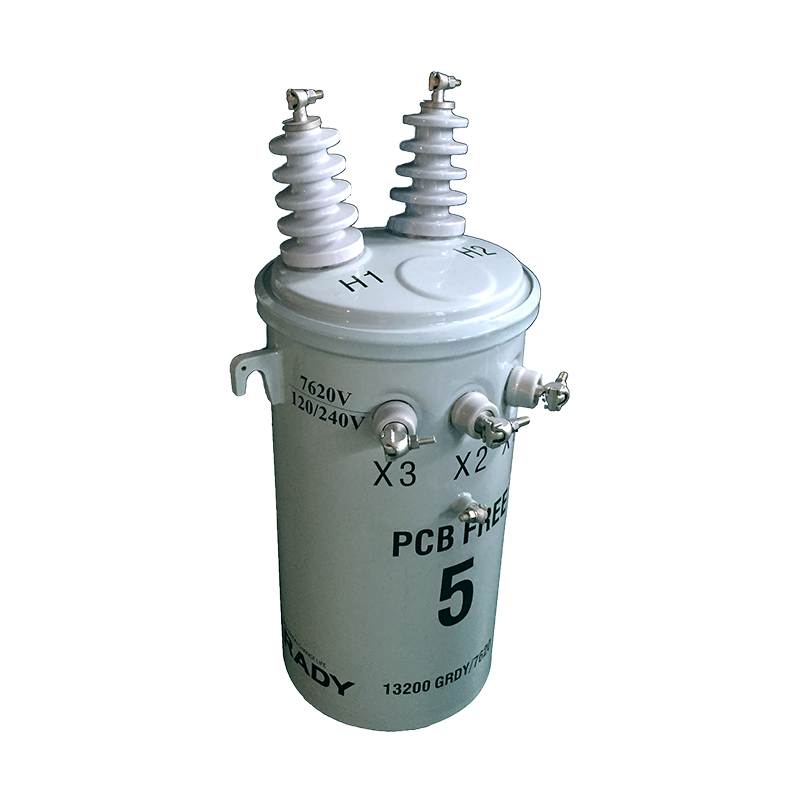Design and Mechanical Strength Verification of Short-Circuit Withstand Capability for Power Transformers
Radial Forces: Radial forces act perpendicular to the axis of the windings. In a typical concentric winding structure, the magnetic field generated by the inner winding exerts an outward radial force on the inner winding, while the outer winding experiences an inward radial force. The magnitude of the radial force is proportional to the square of the short-circuit current and the number of turns in the windings. Mathematically, the radial force per unit length of the winding can be expressed as:
Fr=2π⋅rμ0⋅Isc2⋅N
Axial Forces: Axial forces act parallel to the axis of the windings and are primarily caused by the non-uniform distribution of the magnetic field along the height of the windings. In transformers with fractional turns or uneven winding arrangements, the axial magnetic flux density varies, resulting in a net axial force. The axial force can be calculated using the formula:
Fa=21⋅μ0⋅Bax⋅Isc⋅L
Concentric Windings: Concentric windings are the most widely used structure in power transformers due to their simplicity and excellent electrical performance. To enhance short-circuit withstand capability, the design of concentric windings should focus on the following aspects:
Winding Support: The windings should be supported by rigid insulation cylinders and end rings to resist radial expansion and contraction. The insulation cylinders, typically made of pressboard or epoxy resin, must have sufficient compressive strength (usually ≥ 15 MPa) to withstand the radial forces.
Disc-to-Disc Insulation: In disc-type concentric windings, the insulation pads between adjacent discs play a crucial role in transmitting axial forces. The pads should be made of high-density insulation materials (e.g., TIVAR®) with low creep deformation under compression. The number and arrangement of the pads should be optimized to ensure uniform force distribution.
Winding Tightness: The windings must be tightly wound to minimize the gap between turns, which reduces the risk of turn-to-turn displacement under radial forces. During the manufacturing process, the windings are often pre-compressed using hydraulic presses to achieve a tight structure.
Helical Windings: Helical windings are commonly used in low-voltage, high-current transformers (e.g., distribution transformers) due to their low AC resistance. However, their mechanical strength against short-circuit forces is relatively low compared to concentric windings. To improve their short-circuit withstand capability, helical windings are often designed with:
Axial Stiffeners: Metal or insulation stiffeners are inserted between the winding layers to enhance axial rigidity and prevent layer shifting.
End Clamps: Rigid end clamps made of steel or aluminum alloy are used to secure the winding ends, reducing the impact of axial forces on the lead connections.
Conductor Materials: The windings are typically made of copper or aluminum conductors. Copper conductors have higher mechanical strength (tensile strength: 200–300 MPa) and better electrical conductivity compared to aluminum conductors (tensile strength: 100–150 MPa). However, aluminum conductors are more cost-effective and lighter, making them suitable for large transformers where weight reduction is a priority. To enhance the mechanical strength of aluminum windings, alloying elements such as magnesium and silicon are often added, increasing their tensile strength to 180–250 MPa.
Insulation Materials: Insulation materials not only provide electrical insulation but also contribute to the mechanical stability of the windings. The main insulation materials used include:
Pressboard: Pressboard is a widely used insulation material for winding supports and end rings. It has high compressive strength (≥ 20 MPa) and good thermal stability (continuous operating temperature: 105°C for class A insulation).
Epoxy Resin: Epoxy resin-based composites, such as glass fiber-reinforced epoxy (GFRE), are used for high-voltage transformers due to their excellent mechanical strength (flexural strength: ≥ 150 MPa) and chemical resistance. GFRE insulation cylinders can withstand higher radial forces than traditional pressboard cylinders.
Nomex Paper: Nomex paper (aramid fiber paper) is used for turn-to-turn insulation in high-temperature transformers (class H insulation, continuous operating temperature: 180°C). It has high tensile strength (≥ 200 MPa) and good dimensional stability, reducing the risk of insulation damage under mechanical stress.
Structural Materials: Structural materials, such as the transformer tank, core clamps, and winding supports, must have sufficient rigidity to withstand the mechanical vibrations and forces induced by short-circuit currents. The tank is typically made of low-carbon steel (e.g., Q235) with a thickness of 6–12 mm, depending on the transformer's rating. Core clamps are made of high-strength steel (e.g., Q345) to secure the core laminations and prevent core displacement under electromagnetic forces.
Modeling: A 3D finite element model of the transformer's windings, core, and structural components is constructed using FEA software (e.g., ANSYS Mechanical, Abaqus). The model includes detailed geometry, material properties (e.g., Young's modulus, Poisson's ratio), and boundary conditions (e.g., fixed supports at the tank base).
Force Application: The electromagnetic forces calculated in Section 2.1 (radial and axial forces) are applied to the winding model as distributed loads. The forces are mapped to the finite element mesh based on the magnetic field distribution.
Stress Calculation: The FEA software solves the static equilibrium equations to calculate the stress distribution (e.g., von Mises stress) and deformation of the components. The von Mises stress is used to evaluate the mechanical strength of ductile materials (such as copper and steel) since it accounts for the combined effects of tensile, compressive, and shear stresses.
Strength Check: The maximum von Mises stress in each component is compared to the allowable stress of the material. The allowable stress is typically set as a fraction of the material's yield strength (e.g., 60–80% of the yield strength) to ensure a sufficient safety margin. For example, if the yield strength of copper is 150 MPa, the allowable stress may be set to 90 MPa (60% of the yield strength). If the maximum calculated stress is less than the allowable stress, the component is considered to meet the mechanical strength requirements.
Transient Electromagnetic Force Calculation: The time-varying short-circuit current waveform is obtained from power system simulations (e.g., using PSCAD/EMTDC or ETAP). The electromagnetic forces are calculated at each time step based on the current waveform and the magnetic field distribution.
Modal Analysis: A modal analysis is performed to determine the natural frequencies and mode shapes of the transformer structure. The natural frequency is the frequency at which the structure vibrates freely, and the mode shape describes the pattern of vibration. For transformers, the natural frequencies of the windings typically range from 50 Hz to 500 Hz, depending on the winding size and support structure.
Transient Dynamic Analysis: The transient electromagnetic forces are applied to the finite element model, and the dynamic response (displacement, velocity, acceleration, and stress) of the structure is calculated over time. The analysis considers the material damping (typically 2–5% for insulation materials) to simulate the energy dissipation during vibration.
Resonance Check: The dynamic stress analysis checks for resonance by comparing the frequency of the transient forces to the natural frequencies of the structure. If the force frequency is within 10–20% of a natural frequency, resonance may occur, leading to a significant increase in stress and deformation. In such cases, the design must be modified to shift the natural frequency away from the force frequency (e.g., by increasing the stiffness of the winding supports).
Short-Circuit Current Test: In this test, the transformer is connected to a short-circuit test system that can generate the rated short-circuit current. The test current is applied to the transformer's windings for a specified duration (typically 2–3 seconds) to simulate a short-circuit fault. During the test, the following parameters are measured:
Winding temperature rise (to ensure that the insulation is not damaged by excessive heat).
Vibration and noise levels (to evaluate the dynamic response of the structure).
Winding deformation (using techniques such as low-voltage impulse testing or winding resistance measurement).
Impact Test: The impact test is designed to simulate the high initial peak current of a short-circuit fault. The test involves applying a high-current impulse (peak value up to 100 kA) to the windings for a short duration (typically 10–20 ms). After the test, the transformer is inspected for mechanical damage, such as winding displacement, insulation cracking, or lead breakage.
Destructive Test: In some cases, destructive tests are performed to determine the ultimate short-circuit withstand capability of the transformer. The test current is gradually increased until the transformer fails (e.g., insulation breakdown or winding deformation). The results of destructive tests are used to validate the design assumptions and improve the safety margin of the transformer.
Relatenews
- Architecture Design of IoT-Based Monitoring System for Power Transformers 2025-09-05 15:27:00
- Judgment Standards and Oil Change Process for Power Transformer Oil Deterioration 2025-09-05 15:23:00
- Design and Mechanical Strength Verification of Short-Circuit Withstand Capability for Power Transformers 2025-09-05 15:19:00
- The Role of Power Transformers in Voltage Regulation within Power Systems 2025-08-25 08:14:00
- Environmental Regulations and Technical Measures for Power Transformer Noise Control 2025-08-25 08:12:00
- The Application of Big Data Analytics in Power Transformer Fault Prediction 2025-08-25 08:11:00
- Impact of Distributed Generation Integration on Load Characteristics of Power Transformers 2025-08-16 09:43:00
- Conditions and Protection Coordination Strategies for Parallel Operation of Power Transformers 2025-08-16 09:42:00





